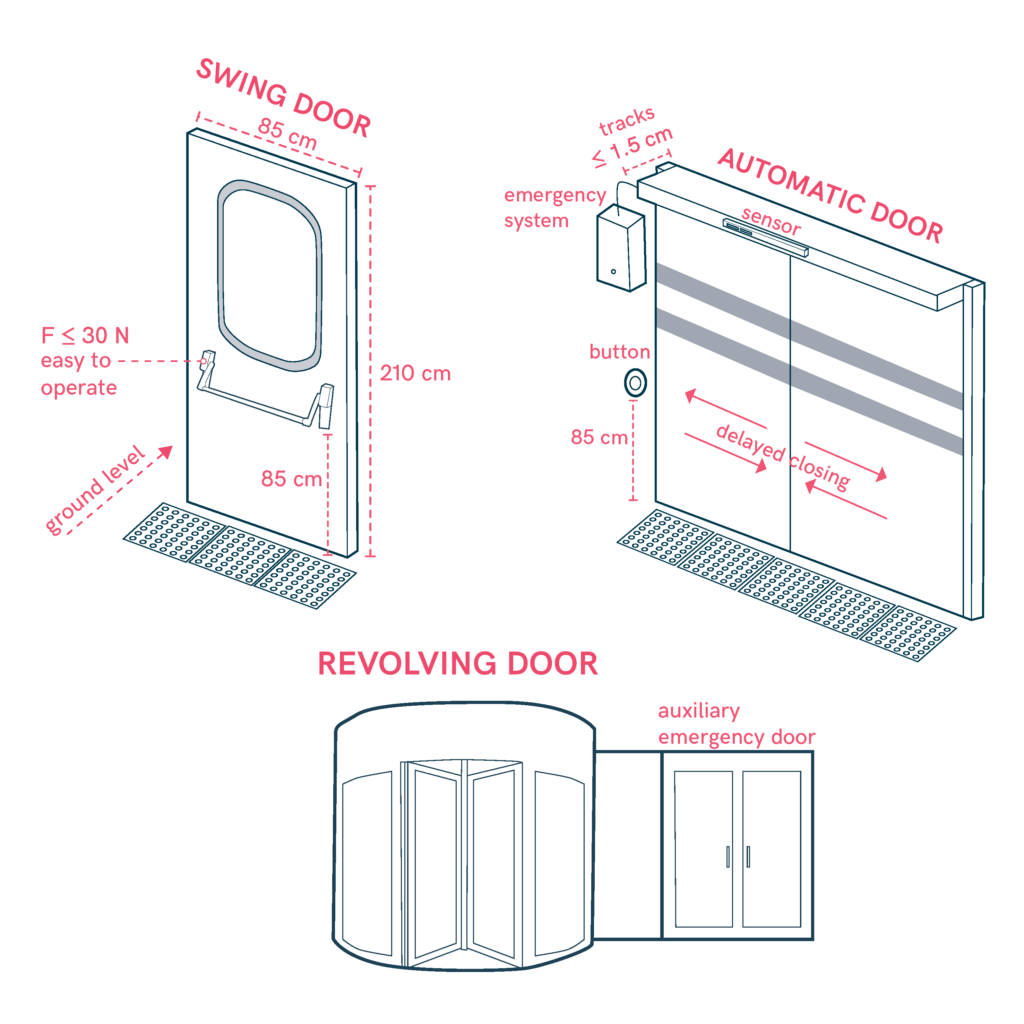Accessible Doors for Inclusive Mobility
Accessible doors are essential for ensuring barrier-free movement in public and private spaces. They should accommodate users of all abilities, including those with mobility aids, by providing sufficient clearance, easy operation, and safety mechanisms. Whether manual or automatic, doors must be designed to minimize effort, prevent obstacles, and ensure smooth entry and exit. Proper spatial planning, user-friendly controls, and emergency accessibility features contribute to a safer and more inclusive built environment.

- Minimum clear width of 85 cm and height of 210 cm for unobstructed passage.
- Adequate space for approach, opening, and closing based on user movement.
- Avoid raised thresholds; ground-level or beveled transitions are preferred.
- Provide tactile and visual contrast for users with low vision.
- Ensure emergency exit systems are easy to operate for all users.
- Swing doors: Opening force ≤ 30 N, with a hydraulic or elastic closing mechanism.
- Sliding doors: No floor-level protrusions; tracks must be ≤ 1.5 cm wide.
- Revolving doors: Must be accompanied by a nearby accessible door.
- Doors should close slowly (≥ 3 seconds) to allow safe passage.
- Automatic doors: Sensor-based or push-button activation at an accessible height (80–110 cm), delayed closing to allow safe entry and exit, safety sensors to prevent accidental closures and power failure backup or manual override for emergency operation.
- Ensure clear signage indicating door function and accessibility features.
- Install non-slip handles and push plates at an ergonomic height.
- Consider voice or sound cues for visually impaired users.
- Maintain regular inspections to ensure proper functionality and compliance.
Sources
- https://accessible-eu-centre.ec.europa.eu/content-corner/digital-library/en-172102021-accessibility-and-usability-built-environment-functional-requirements_en
- https://www.access-board.gov/adaag-1991-2002.html#2.%20GENERAL
- https://universaldesign.ie/built-environment/building-for-everyone/building-for-everyone-full-series
- https://www.codigotecnico.org/pdf/Documentos/SUA/DccSUA.pdf
- Carers
- Children
- Cognitive
- Cognitive abilities
- Decolonial perspective
- Digital
- Digital barrier
- Enviroment
- Environmental
- Gender and generations
- Gender perspective
- Hearing impairment
- Low-education
- Low-income
- Older people
- Other
- Physical abilities and features
- Sensory and Physical
- Socioeconomic
- Visual impairment